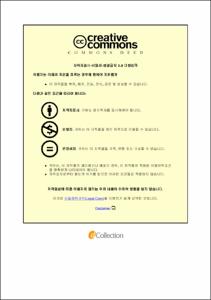언어와 문화를 통합한 일본어과 교수학습 방안
- Abstract
- The purpose of this study is to develop a teaching-learning model of the Japanese language and culture and apply it to the class to verify the effectiveness of the model in order to enhance the core competence and subject competence, which was first introduced in the 2015 revised curriculum. To this end, this study went through the stages of developing, applying, and verifying the effectiveness of the teaching-learning model, which integrates the language with the culture. In order to develop this model, the contents system, learning factors, and evaluation methods of the revised 2015 curriculum of the Japanese language were reviewed. Moreover, the concepts of culture in Japanese language education and cultural contents and materials presented in the textbooks were analyzed. The integration curriculum of language and culture was based on the contents of cultural literacy and teaching-learning strategies utilizing them. This curriculum was also realized through the teaching-learning model I, the teaching-learning model II, their subsequent programs and procedures, and class design. Based on the model, programs such as 'Exploring Japanese Culture by Theme' and 'Visual Thinking, Talking about My Day' were developed and applied to the class.
With high school students in regular coed high school in Busan Metropolitan City and T teacher, who had seven-year teaching experience, the teaching-learning integration models of the Japanese language and culture I and II were applied to classes in August and December 2018, respectively. After the classes, the effects of the models on the core competence and subject competence in the 2015 revised curriculum were verified by investigating the effects on the students’ 'communication competence, culture understanding, and enhancing interest' and their correlations. For this verification, statistics such as frequency analysis, cross-tabulation analysis, and factor analysis in SPSS 22, R program, and WORD CLOUD were utilized. The conclusions of this study are as follows. First, the researcher confirmed that the classes which were applied with the teaching-learning integration model of the Japanese language and culture was effective for students' communication competence, learning interest, and cultural understanding. Second, considering the two teaching-learning integration models of the Japanese language and culture, students' most preferred teaching-learning method was collaborative learning. Third, it was concluded that the teaching-learning integration models of the Japanese language and culture were effective in enhancing the core competence and Japanese language competence in the 2015 revised curriculum. The competencies cover student participation, information utilization ability, communication skills, cultural understanding, motivation, creativity and thinking skills, and fostering world citizenship awareness. Fourth, the Japanese language and culture integration model I was effective in the teaching-learning activities in the order of 'cultural understanding > affective motivation > writing > reading > listening' from the greatest to the least. Fifth, the Japanese language and culture integration model II showed the importance in the order of 'interest enhancement > understanding culture > writing > reading > listening' from the most important to the least important. Sixth, the model I demonstrated high correlations between 'reading and speaking,' 'writing and reading,' and 'culture understanding and interest development.' Cultural understanding, especially, showed a considerable influence on the enhancement of motivation. Seventh, in the model II, factor analysis showed high correlations of writing with listening, speaking, and reading. Another finding was that cultural understanding was highly correlated with all the other factors, confirming that understanding and interest in culture were having a significant influence on communication competence. Based on the conclusions of this study, the researcher would present five suggestions as follows. First, developing a teaching-learning curriculum and designing classes by integrating language and culture, rather than considering them separately, can help enhance the core competence and subject competence recommended in the revised 2015 curriculum. Second, teachers' attention and research are necessitated for language and culture integration teaching-learning, and for this purpose, training, and support at the education office level, development of materials, and network among teachers are required. Third, it is required to make efforts to reduce the workload of teachers preparing for classes by presenting methods, procedures, and class design on integration teaching-learning of language and culture and by producing and distributing teaching and evaluation materials in textbooks and teachers' guides in the future. Fourth, since the results of this study confirmed that there is a great correlation between communication skills and cultural interest, more research and attention are needed on the development of various programs and their applications. Fifth, student participation and student-centered activities, peer cooperation, and increasing opportunities for language output through 'speech and writing' activities significantly affect class dynamics and communication skills. Therefore, it is necessary to promote the methods actively.
- Issued Date
- 2020
- Awarded Date
- 2020. 2
- Type
- Dissertation
- Publisher
- 부경대학교
- Affiliation
- 부경대학교 대학원
- Department
- 대학원 일어일문학과
- Advisor
- 손동주
- Table Of Contents
- Ⅰ. 서론 1
1.1. 연구의 필요성 1
1.2. 연구의 목적 6
1.3. 용어의 정의 8
Ⅱ. 이론적 배경 9
2.1. 언어와 문화를 통합한 일본어 교수학습 9
2.2. 일본어Ⅰ 교과서 분석 16
2.3. 선행연구 26
Ⅲ. 연구 방법 30
3.1. 연구 대상 30
3.2 연구 기간 및 절차 31
3.3. 연구 도구 32
3.4. 자료 분석 방법 36
Ⅳ. 연구 내용 38
4.1. LCIJ 교육과정 38
4.2. LCIJ 교수학습 모형개발 43
4.3. LCIJ 교수학습 과정 평가 자료개발 및 생활기록부 기재방안 63
Ⅴ. 연구 결과 70
5.1. 기초조사 및 요구조사 70
5.2. LCIJ 교수학습 빈도분석 79
5.3. LCIJ 교수학습 상관관계 분석 90
5.4. LCIJ 교수학습 계층분석 98
5.5. LCIJ 교수학습 요인분석 101
5.6. LCIJ 교수학습 교차분석 105
Ⅵ. 결론 및 제언 116
6.1. 결론 116
6.2. 제언 120
참고 문헌 122
부록 127
- Degree
- Doctor
- Files in This Item:
-
-
Download
 언어와 문화를 통합한 일본어과 교수학습 방안.pdf
기타 데이터 / 7.47 MB / Adobe PDF
언어와 문화를 통합한 일본어과 교수학습 방안.pdf
기타 데이터 / 7.47 MB / Adobe PDF
-
Items in Repository are protected by copyright, with all rights reserved, unless otherwise indicated.